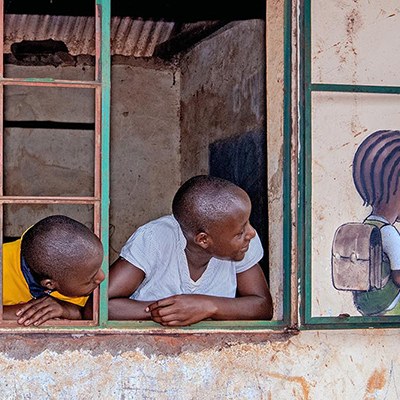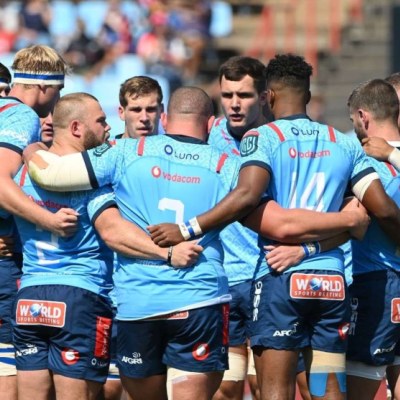First Light in Kenya - Windy City Sports- Chicago,Illinois
-
Category
-
Submitted By
-
15Apr, 2018
First Light in Kenya By Jessica Tinianow
(Published in Summer 2005 Windy City Sports Chicago,Illinois)
Dawn breaks in Kenya. The plains of the Masai Mara are still. A herd of Thomson gazelles is grazing on the low grass. Suddenly, one runs to the outside and begins to lap the others. The lone gazelle accelerates and is galloping gracefully in ovals around the rest of the herd as if completing 200 meters on an outdoor track.
This gazelle mirrored the Kenyan running experience I had the prior week. I had participated in the first Runner’s World Kenya Running Safari and still had a runner’s high. This unique safari, organized by the magazine and Micato Safaris (www.micato.com) transported 12 Americans, one Japanese and this writer to the Northwest Highlands of Kenya, to Eldoret, a town located 3,085 meters above sea level from which most of Kenya’s elite distance runners originate.
It’s here that I journeyed into the home of Kenya’s greatest running tribe, the Kalenjin, in the highlands along the western edge of the magnificent Rift Valley. Over the course of 10 days, all of us socialized, ran and broke bread with more than 30 elite, world-class Kenyan runners.
As an avid recreational runner/triathlete I had watched Kenyans dominate many mid- and long-distance races for over 20 years. Yet before visiting Eldoret most of these runners were nameless to me except for a few of the most celebrated, like Kip Keino, Paul Tergat and Tegla Laroupe. When the Kenyans zipped by, I would clap and cheer for them collectively without any knowledge of their individual achievements. But I always wondered who these extraordinary runners were and why they were so good. What were the secrets behind all those anonymous faces?
From the moment I opened the van door and stepped onto the edge of the simple, dirt running track of Kamirriny stadium in Iten, a local Kalenjin town close to Eldoret, my surreal running experience began. Sprinting by me in midst of a morning interval workout was world-class athlete Lornah Kiplagat (see notes on all the athletes at the end). Then, my attention drifted to another three runners who ran with effortless long strides. I was told that I was watching three of Kenya’s most accomplished mid-distance medalists—Abraham Chebii, Sammy Kipketer and Ben Maiyo. A few daring souls in our group jumped in and tried to keep pace, though a running injury prevented me from joining the fray. Throngs of curious, smiling and shy schoolchildren surrounded us and squealed with delight as we gave them Bic pens and showed them our digital photos.
That afternoon I dined with Kiplagat at the training center she and her husband, Pieter, founded for young, gifted female athletes in the community. Over dinner, she shared with me her hopes and dreams for the future of female Kenyan athletes. “I encourage them to be the best they can be—they’re already doing very well,” she said.
Almost all the athletes, whether title holders or young future stars, come from impoverished backgrounds. Even with overseas race winnings they maintain strong ties to their family and community and never seem to lose a sense of their roots. The people live simply—without running water, TV or radio, but they all have enough to eat. The children walk or run to school, often barefoot in tattered school clothes.
Legendary runner Kip Keino proudly took the group on a tour through the beautiful gardens on the grounds of his training camp. He showed us where he grew pineapples, bananas and herbs, but he barely mentioned the home and school for 100 orphans that he built across the field. Brother Colm O’ Connell, a longtime coach who’d produced many champions at St. Patrick’s High School in Iten, proudly showed us his schoolyard full of trees—each one planted in honor of a graduate who went on to running fame. There was almost no room left to plant new seedlings. He shared with us the main lunch course of the student athletes, which is called githeri—a simple cooked mixture of corn and beans—as well as the other basic ingredients of their daily diet: tea, toast, meat and the aforementioned ugali. I wondered if perhaps these were the keys to the Kenyan success.
Often, celebrated athletes training and living in the Eldoret area joined our runners on casual runs along dirt roads past farms in the hills of the Rift valley. Though limited by my injury, I was able to participate in the enthusiasm of the experience.
In the hills of Chirchir I watched with envy as Eliud Kipchoge, Matthew Birir and Richard Limo ran with our group. The Kenyans jogged along as the pack descended and ascended the hills on unpaved, uneven dirt roads with beautiful panoramic vistas of the Rift Valley and its idyllic countryside at every turn of the road. Children appeared at the side of the road and stared with curiosity. It was a sight they likely had never seen before.
Overall, our group was welcomed into five training centers and five private homes. We also received an open invitation to participate in the North Rift Valley Regional XC championships in the fertile highland of Kapenguria. Nine of us signed up for the 4K and 12K races. Our team entered as the Mzungu Wazimu (crazy white people). Crazy indeed, for age, altitude and genes were all against us from the outset.
Hundreds of local villagers and children had walked miles in the scorching heat to watch and cheer on their own young talents, many of whom ran barefoot. They clearly were bewildered and bemused by the site of the Mzungu running in the searing Equatorial heat on the remote muddy dirt field. They pushed forward to get a closer look.
Our team placed last but won the hearts of the crowd. For the Kenyans, participating at Ngong meant a potential entry ticket to the next level of the African and World Championships.
I never discovered if there was really one secret to the success of Kalinjen athletes; it’s probably a combination of things. Though I suspect it’s the fact that running is more than a sport, but is instead woven into the fabric of their lives.
[Submitted by Jessica Tinianow]


















